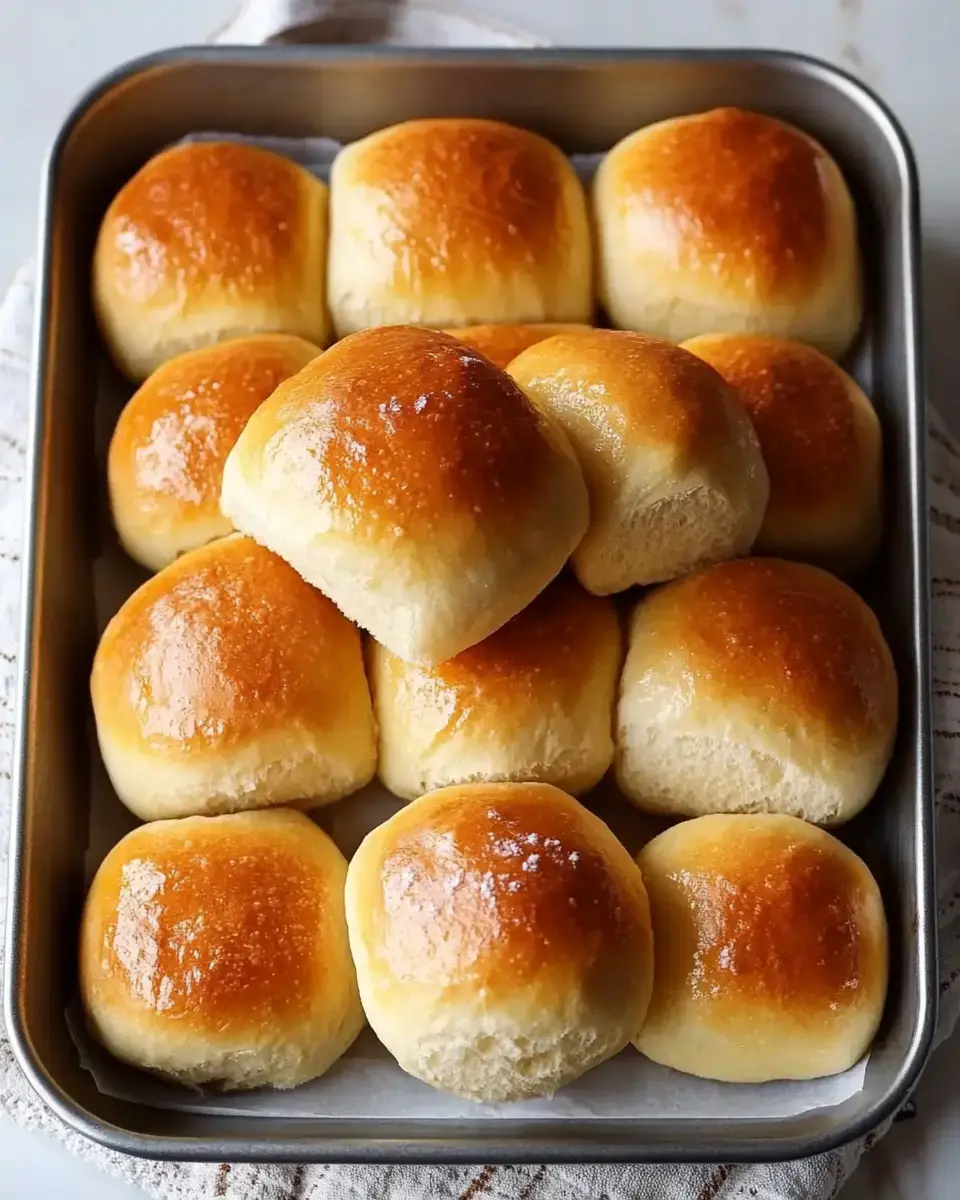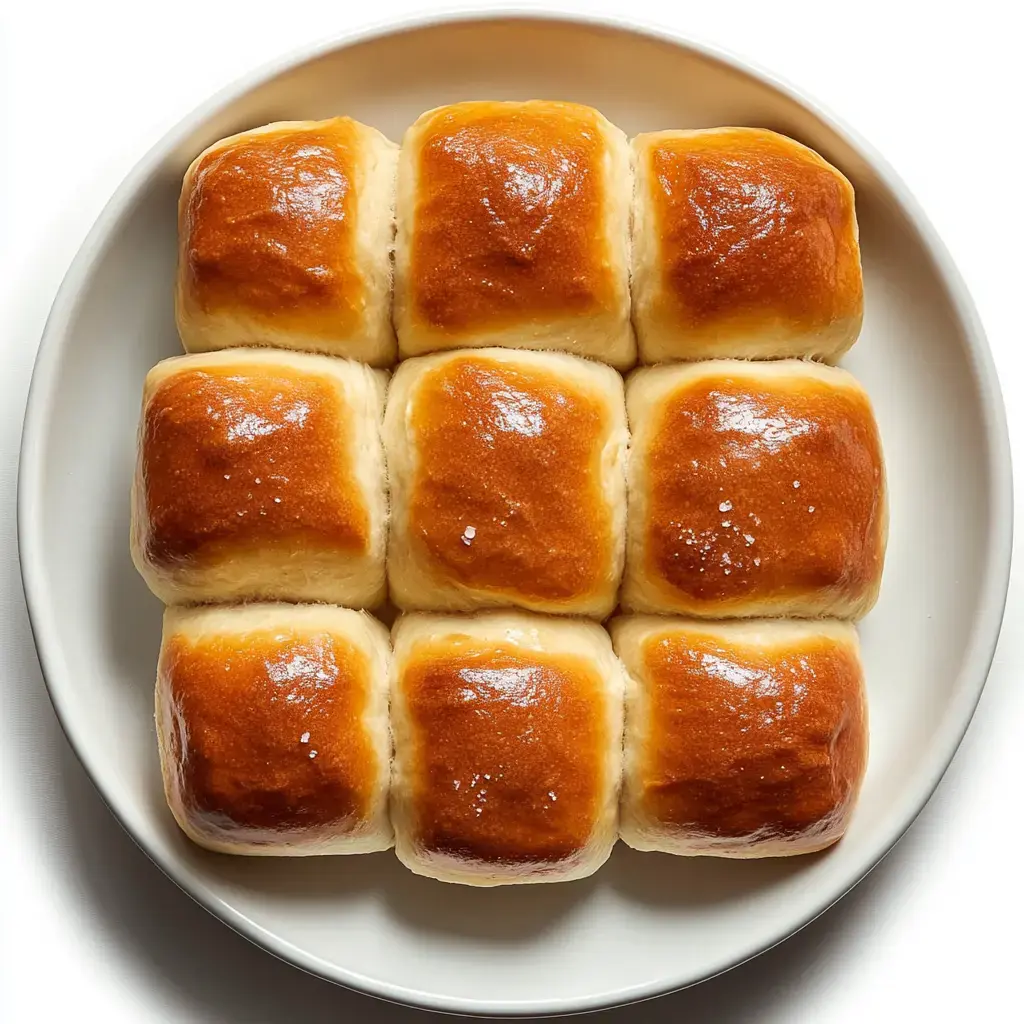 Pin it
Pin it
These homemade dinner rolls give you perfect fluffiness and buttery flavor with every mouthful. They're done in less than 3 hours and go great with anything from regular weeknight meals to special holiday dinners. You'll love the golden outside and super soft inside that's just waiting for a smear of butter, a drizzle of honey, or a dollop of jam.
Top Advantages of Baking These Rolls
You'll only need 7 simple ingredients and not much active work time for these rolls. They can be frozen for up to 3 months, so you can make them ahead for busy times. It's easy to adjust the recipe - make twice as many for big gatherings or half for smaller meals. Once you get good at this dough, you can use it for everything from sandwich buns to sweet cinnamon rolls.
Full Ingredients List
- Active Dry Yeast: 2¼ teaspoons (one regular ¼-oz packet) - make sure it's fresh and lively, pre-packaged ones work best for reliable results
- Whole Milk: ½ cup warmed to 110°F (43°C) - getting this temperature right is super important for waking up the yeast
- Granulated Sugar: 2 tablespoons (24g), split in two parts - helps the yeast work and adds a hint of sweetness
- Unsalted Butter: 5 tablespoons (71g), melted then cooled down to room temp
- Sea Salt: 1 teaspoon (6g) fine sea salt - you can use regular table salt instead, but cut it to ¾ teaspoon
- All-Purpose Flour: 3 cups (375g) - unbleached is better, and spoon it into measuring cups then level off
- Olive Oil: 2 tablespoons for greasing your bowl and pan
- Topping Butter: 2 tablespoons (28g), melted
- Finishing Salt: ½ teaspoon flaky sea salt to sprinkle on top
Detailed Making Process
- Wake Up Your Yeast (8-10 minutes)
- Warm milk to exactly 110°F (43°C). Mix it with 1 tablespoon sugar and yeast in your stand mixer bowl. Wait 5-8 minutes until it gets foamy. If there's no foam after 10 minutes, throw it out and start over.
- Mix Your Dough (5 minutes)
- Add the rest of your sugar, melted butter (105°F/40°C), and salt. With the dough hook, mix slowly (Speed 2) for 30 seconds. Put in flour one cup at a time, mixing 30 seconds between cups. Your dough should pull away from the sides when it's right.
- Let It Grow (60-90 minutes)
- Move dough to an oiled bowl. Cover it with plastic wrap. Put it somewhere warm, about 75°F (24°C), until it doubles in size, usually 60-90 minutes. When you poke it, your finger should leave a dent.
- Create Your Rolls (15 minutes)
- Cut dough into 15 equal pieces (75g each). Roll each piece into a tight ball. Put them in an oiled 9x13-inch pan, keeping them about 1 inch apart. Cover loosely with plastic.
- Second Growth (45-60 minutes)
- Let them rise until they touch each other and double in size. Press one gently - it should slowly bounce back.
- Cook and Finish (22-25 minutes)
- Bake at 350°F (175°C) for 22-25 minutes on the bottom rack. Turn the pan around halfway through. Brush with melted butter and add salt right after taking them out. They should be 190°F (88°C) inside.
Keeping and Warming Tips
Keep cooled rolls in a sealed container at room temp for 3 days or in the fridge for a week. They'll freeze well for up to 3 months in freezer bags. To warm them up, heat room temperature rolls at 300°F (150°C) for 5 minutes, or frozen ones for 8-10 minutes until they're heated through.
Fixing Common Problems
If your rolls come out heavy, you probably used too much flour or didn't let them rise long enough. Make sure to measure flour carefully and keep the rising spot warm (around 75°F/24°C). If they brown unevenly, your oven has hot spots, so turn the pan during baking. If they spread out too much during the second rise, next time cut the rising time by 15 minutes.
Must-Have Tools
You'll need a stand mixer with dough hook to work the dough properly. Grab a 9x13-inch metal or glass baking pan for even heating. A digital thermometer helps get temperatures just right. A kitchen scale makes measuring more accurate. You'll also want clear plastic wrap to cover the dough while rising and a pastry brush for spreading butter.
Prep-Ahead Choices
You can make the dough and let it rise once, then put it in the fridge for up to 24 hours. Take it out 2 hours before shaping. Or you can shape the rolls and freeze them uncooked for up to a month. Thaw them overnight in the fridge, then let rise for 2 hours before baking. Add 2-3 extra minutes of baking time for cold dough.
Recipe Twists
Switch the milk for a non-dairy option and use plant-based butter to make them vegan. For tasty savory rolls, mix in 1 tablespoon of herbs or garlic powder after the first rise. Try using 25% whole wheat flour for a heartier roll. Want shiny tops? Brush with beaten egg instead of butter. Roll with cinnamon-sugar inside for a sweet version.
Safety and Quality Checks
Always check if your yeast hasn't expired before starting. Keep milk between 105-115°F (40-46°C). Your dough should feel slightly sticky but not wet after kneading. The rolls must reach 190°F (88°C) inside when done. Let them cool completely before storing. Throw them away if they grow mold or get too hard. And never eat raw dough.
 Pin it
Pin it
Frequently Asked Questions
- → Can you prep ahead?
Shape the dough the night before and chill it. Let it warm up before baking for fresh-tasting rolls in the morning.
- → Why isn't the yeast working?
Try a new batch. Double-check water warmth—shouldn’t be hot. Watch for foam. If it’s dead, you’ve gotta start over.
- → Need non-dairy options?
Use plant-based milk and butter alternatives. It still works fine, but you might notice slight flavor differences.
- → Can these be frozen?
Yup, once baked and fully cooled. Wrap them tight. Warm them up later, but fresh is always best!
- → Want extra-soft rolls?
Don’t overwork the dough. Let it rise nice and long. Keep it warm, and brushing with butter is a game-changer.
- → Why are they getting too dark?
Try covering them with foil, turning down the heat, or moving the pan lower. Keep an eye on them!
- → Taking them on the go?
Best eaten warm. Wrap them snug in a cloth while warm. Don’t forget some butter for the trip!
- → Can you speed things up?
Bread doesn’t like rushing. Plan a few hours ahead. Quick shortcuts won’t match the flavor. Make a big batch if needed.
- → Making a bigger batch?
Just double it. Make sure you’ve got enough room for rising and baking. Don’t overcrowd the rolls.
- → How can I boost flavor?
Brush with butter. Sprinkle fresh herbs, garlic, or even a little cheese. Just keep the bread’s taste in focus.
- → Why isn’t it rising well?
Make sure the yeast is fresh, and the dough stays warm. It might need more time, so be patient!
- → Dough too sticky?
Add a bit of flour gradually while kneading. Oil your hands if needed, and don’t overdo the flour—it should stay soft.
Conclusion
If you enjoyed this, try some warm soft pretzels or sweet butter buns. Fresh bread is unbeatable!
